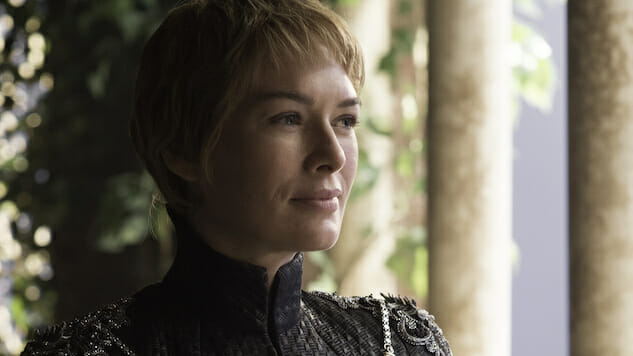Our Favorite Scenes in Game of Thrones: Cersei Destroys the Sept of Baelor, “The Winds of Winter”
(Episode 6.10)
Photo: Helen Sloan/HBO
Editor’s note: This is part of a series of essays revisiting our favorite scenes in HBO’s Game of Thrones. Read the previous installments here.
Raiment. The crown of a monarch. The sackcloth-burlap robes of a monk. The performative-modesty hairdo of a subdued young queen. The leather and quartz crystal of… whatever Cersei is.
Piano notes in light echoes; wistful, sorrowful, and somehow inevitable. Slightly moaning strings. The motif ties together several solitary characters in their discrete acts of dressing and preparing for what is about to happen. Plink. Plink.
People file into the Sept. Successions of tight shots illuminate the faces of the haggard Loras Tyrell, the High Sparrow, Lancel Lannister, Margaery, Lord Mace—you can’t help thinking of the Academy Awards or something: Everyone is in that building, except Tommen and Cersei, still back at the Red Keep donning their regalia. Strands of silver chain across the front of Cersei’s dress. A wreath of lion pendants around Tommen’s shoulders. Pycelle’s maester chain.
The music pauses as Loras is dragged to the middle of the Sept to confess to his sins. Depravity. Dishonesty. Profligacy. Arrogance. It’s a creepy echo of two previous pre-arranged confessions, neither of which went according to plan: Ned Stark’s on the steps of this same building, and Tyrion Lannister’s in his preposterous sham trial for Joffrey’s murder. It looks like Margaery was in on it and Mace wasn’t. But it seems to be proceeding apace. The Sparrows carve a seven-pointed star into Loras’ forehead with a knife.
-

-

-

-

-

-

-

-

-

-

-

-

-

-

-

-

-

-

-

-

-

-

-

-

-

-

-

-

-

-

-

-

-

-

-

-

-

-

-

-








































